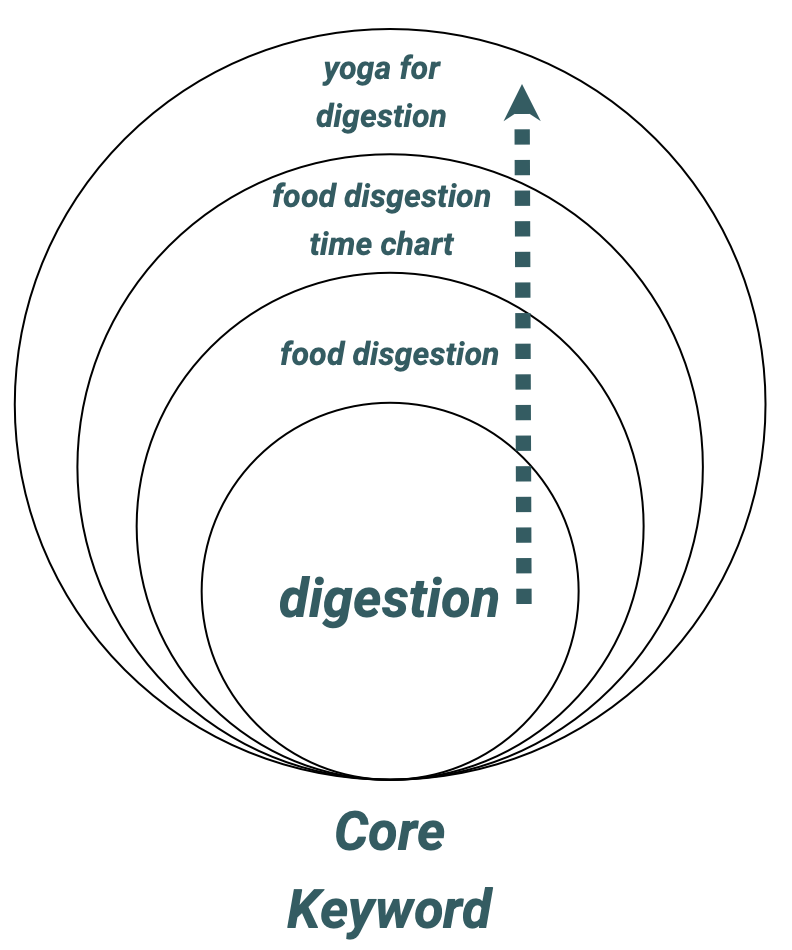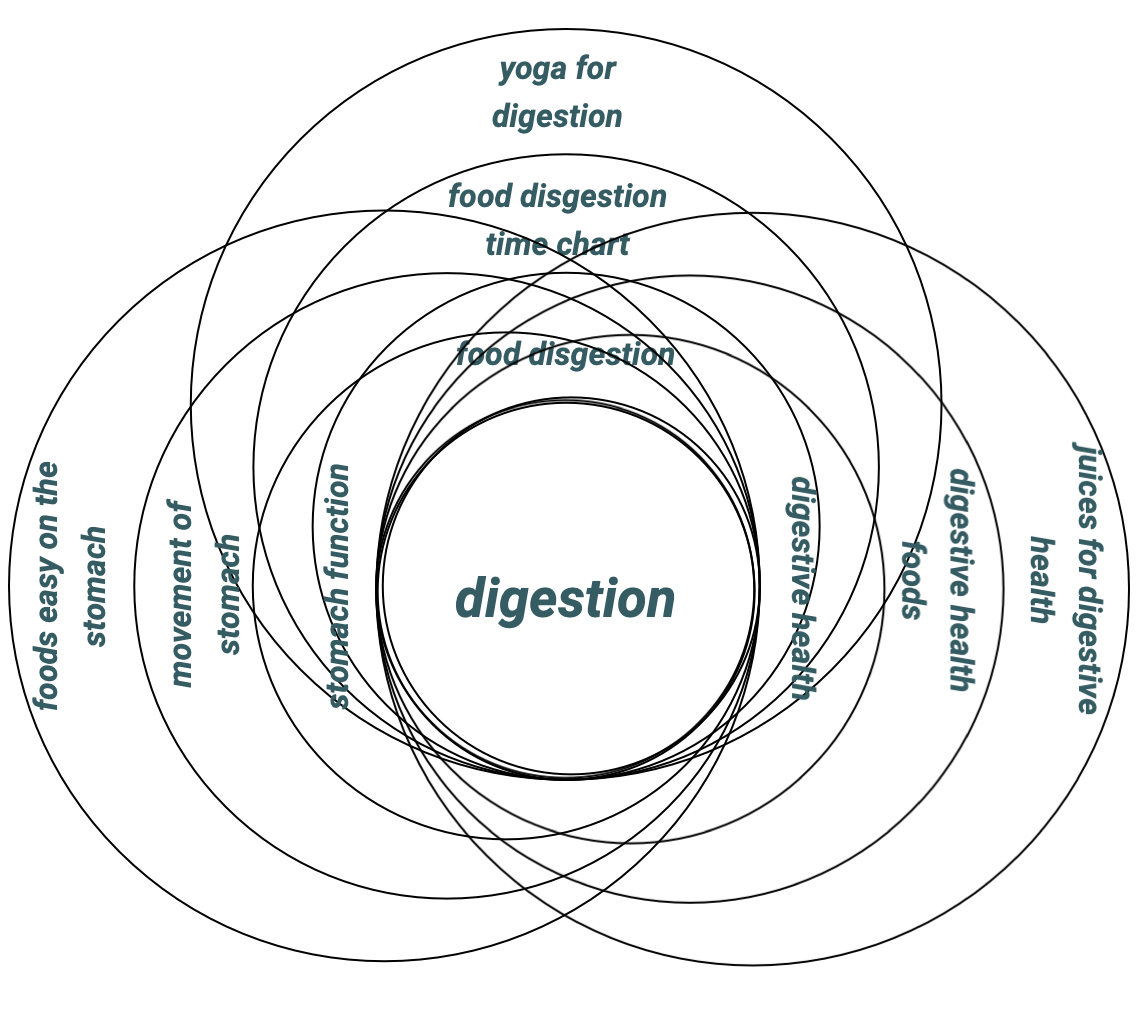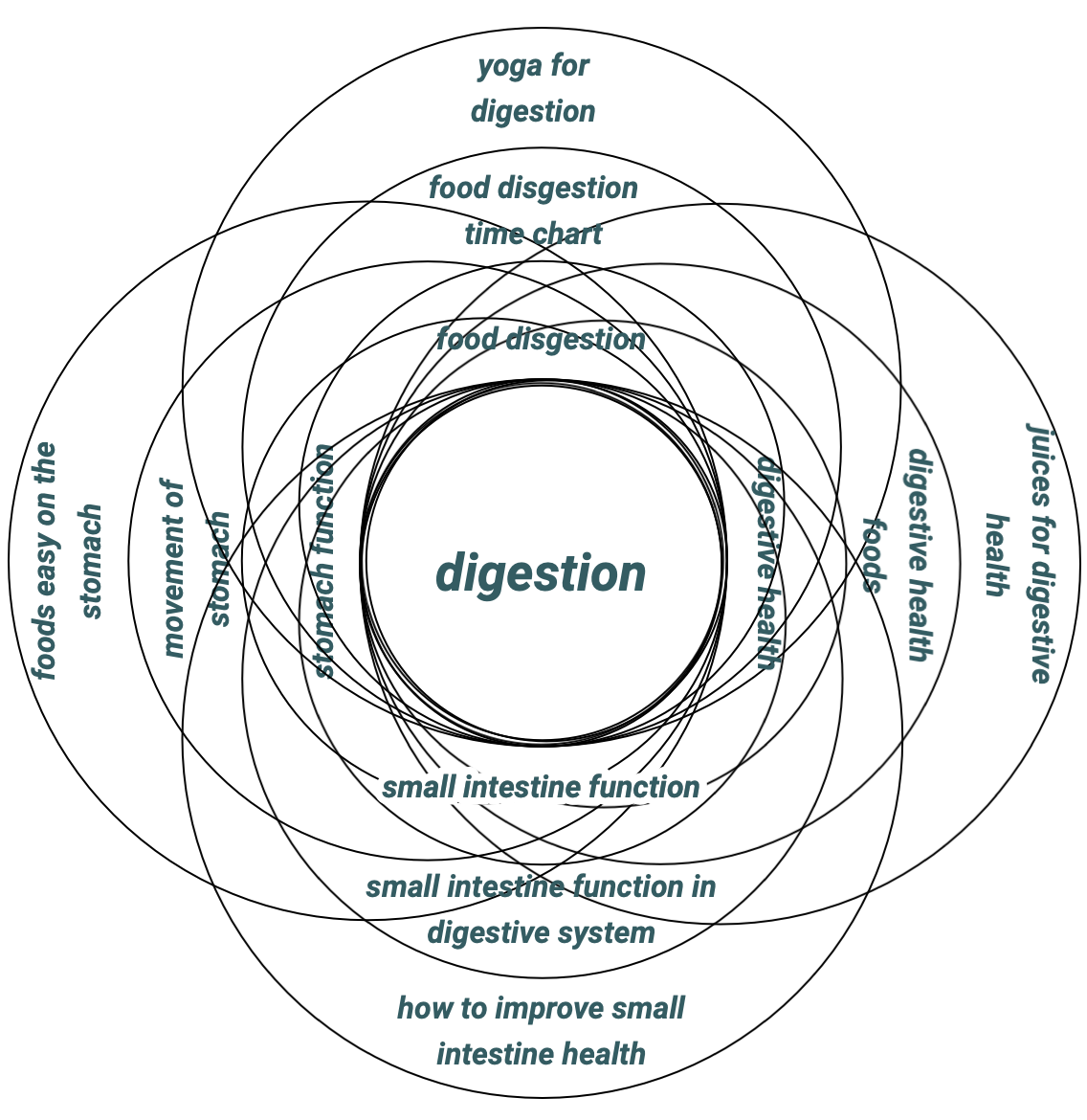Hot damn! You have a brand new initiative to crush SEO next year — resources and a budget to dominate content in your market. So you fire up Google Keyword Planner and find the “perfect” keyword you need to rank for and a list of 25 other really good ones. And you throw them in a spreadsheet.
Keyword research done?!
6 months later the CEO pings you on why your SEO initiative and content strategy you pushed so hard for doesn’t seem to be working. After all, you created 26 pieces of content on your top 26 keywords, they all passed the SEO checker. What gives?
You didn’t follow a reliable keyword research process. A process that will help you build and map your market’s universe of keywords. A keyword map that shows you how to approach your market and develop the right content at the right time in order to rank for your target keywords.
Why you must plan in order to build a keyword universe

Roald Amundsen won the race to the South Pole with better planning than his competitors (they all froze to death 🥶).
What’s the most important aspect of a content and SEO strategy that works?
Well, we have to go back to the spring of 1912 when a rescue party was sent to the South Pole to find the explorer Robert Falcon Scott and his expedition party which had been missing since the previous fall.
They found the party, except the entire group had frozen to death. Ironically they were only 10 miles from a supply center.
Roald Amundsen, a famous Norwegian explorer, and his party set out for the South Pole at the same time as Scott.
The difference was, while Scott’s group were mostly friends. Edmondson, had planned the entire expedition down to the T. He left nothing to chance — he hired the best specialists and experts and bought the best gear.
Edmondson planned every detail. And in the end he was the first human to discover the South Pole.
Scott’s group all died in the cold.
The stakes of keyword research are not as high as planning a trip to the South Pole. But it is all about detailed planning.
What are the three phases of keyword research?
I break the keyword research process into three distinct chunks. And attention to detail here will make or break your SEO strategy.
The three phases of keyword research process:
- Capture your keyword universe (this article)
- Layout Your Constellations
- Map the universe.
That’s it. Three phases that will set you on the path build a great keyword plan for your business.
Specialized keyword research tools will make this process easier and faster. But if you’re starting from scratch, all you need is a spreadsheet, an internet connection, and preferably a brain.
The importance of choosing the right focus keyword
Phase one: Capture Your Keyword universe

When I tell CEOs I want to gather a list of 150,000-250,000 keywords to kick off their keyword strategy I get one of two reactions. The first reaction is shock. “We will never be able to create content for that many keywords.” The other reaction, “Why so many?”
My response? I don’t want to leave any stone unturned when it comes to planning your keyword list. I want to go to the edges of their market, gather every keyword that could possibly be important to their business.
You must push the limit of the market, the product, and find every keyword that’s relevant to your product offering, your competitors’ content strategies, and you uncover new uncharted territories for growth.
Seeing the breadth and depth of all associated keyword people in your target market are searching for will help strengthen our content strategy. It gives us a sense of what people are searching for and where other competitive businesses are investing time and resources (and where they’re not).
This keyword research process is a manual gap analysis.
In the end I promise you will be very happy to have done it. It’s an experiential gap analysis that can only be done manually.

The woman who unlocked the universe.
Like Henrietta Swan Leavitt, we’re gazing at the sky and identifying all the various types of stars and clusters to help map our complete keyword universe.
We’re looking out into the farthest reaches of our market to find the faintest glimmer of a related keyword.
And (not to mix metaphors too much) like the explorers racing for the South Pole, our teams will use this keyword map to guide our direction — when things don’t go to plan, and when things are going great.
The goal is 99% confidence we have gathered the keywords that are germane to our market. This is a necessary heuristic for your own understanding of the market you serve than it is that you’ll create content for every keyword you collect. Thank christ.
We start gathering the universe with a single keyword. Some call it a “seed” I prefer to call it a core keyword, because it’s core to our keyword theme strategy. The nucleus.
The example below we will use “digestion” as our core keyword. And we will group a couple keywords vertically, they are not ranked hierarchically yet. That comes in the mapping stage.
A vertical four keyword cluster example:

- digestion
- food digestion
- food digestion time chart
- yoga for digestion
If we were a dietitian or naturopath we’ve already got a few great focus keyword ideas blog ideas (many people will run off and create 4 blog posts at this point). But as we’re strategic and mapping our entire keyword universe. We’re going to go much deeper into ALL the related keywords. But again these ideas need to be relevant to our business.
Now we understand that when talking about digestion we can also include related food, time charts, and yoga topics.
As we research we find that “digestive” is a word that frequently comes up. “Digestive” is a derivative of our core keyword. We add some of these related keywords as clusters as well:

- digestion (core)
- digestive health
- digestive health foods
- juices for digestive health
Within this group we see health, health foods, and juices for digestive health.
And as we do additional searches different organs keep popping up. Like the stomach and small intestine, these seem to be related to digestion? We add them too.
Related Keyword Clusters: Horizontal Brainstorm w/ No Derivative:

- digestion
- stomach function
- movement of stomach
- foods easy on the stomach
We see function, movement of, and foods that are easy on your stomach are related to our core keyword.
Same goes for small intestine… we can play this game for many hours to come up with a complete keyword map that reflects the reality of the many directions your strategy can go.
Related Keyword Clusters: Conceptually related w/ no derivative:

- digestion
- small intestine function
- small intestine function in digestive system
- how to improve small intestine health
Here as we research small intestine, we find function of people are searching for specific organs in the digestive system, and again how to improve the health of their gut.
Very quickly, in 15 keywords we’ve identified 4 key pillars of our “digestion’ keyword research process and ultimate content strategy.
How to research the core keyword for your business?
Choosing your core keyword is a bit of a hypothesis at this point.
When I’ve built keyword strategies for other businesses, I reasoned the ultimate center of our keyword strategy shouldn’t be divisible by another “better” keyword.
Ultimately, it had to be the nucleus, nearly indivisible.
Here are some of the examples of core keywords I started with and the business types:
- Core keyword: contracts –> contract lifecycle software
- Logical reasoning: Contracts must be understood in order to be managed
- Core Keyword: knowledge –> knowledge management software
- Logical reasoning: In order to allow your SaaS to manage your internal knowledge of your business, you must define what knowledge is.
- Core keyword: fundraising –> crowdfunding platform
- Crowdfunding is the modern term for gathering a “crowd” in order to raise money for a cause
- (to be honest, looking back I think a better core keyword term would have been “donation” but this was earlier in my career before I’d worked through this entire theory)
- Crowdfunding is the modern term for gathering a “crowd” in order to raise money for a cause
The Importance of Your Core Keyword
The core keyword is the single jumping off point gives us a touchstone we can always return to as we expand outwardly to other keywords on our gathering mission.
We gather all the keywords we can and dump them into our keyword repository. We also copy and paste:
- Demand/Volume (Proxy of how many people are searching this keyword phrase per month?)
- CPC/Cost per click (What is the average aggregate of what advertisers are willing to spend for a click for this term?)
- Keyword difficulty (How many advertisers are willing to spend money at auction at a single time?)
We gather but do we do not analyze at this point.
For a “faucets” query, this looks like:
- bathroom faucets
- chrome bathroom faucets
- kitchen faucets
- faucet
- how do faucets work
- how to clean chrome faucets
Plus another 102,000 keyword queries related to faucets. No big deal.
So here’s where things get interesting. We need to also look at the related keywords and competitor data.
This is a competitive analysis website after all, tools like SEMrush and Ahrefs are magic for finding competitive sites ranking for our North Star keywords.
A quick search reveals the competitors ranking for our keywords, so we snatch them up, we grab:
- keywords
- volume
- CPC
- difficulty
- Competitor’s URL
We must also gather all of these keywords and add them to your keyword repository. Each root keyword is another constellation in your keyword universe, another path you’ll need to explore. Your keyword research process can expand and contract based on your business’s needs.
But in this keyword capture phase, when I’m exploring and copying and pasting keywords into a spreadsheet, like Excel or Google Sheets, I really recommend moving fast.
It’s a lot of data, it’s easy to get distracted unless you have a process. Most people start analyzing now. That’s a mistake.
Keep gathering, exploring, and copying and pasting. But a word of caution. Make sure you don’t mix up your columns with keywords volume CPC, and difficulty. That could be bad, so pay attention. You’ve been warned.
Do many horizontal searches:
- irritable bowel syndrome
- celiac disease
- constipation
- digestive system
Make sure you do your horizontal searches when you find an interesting cluster of keywords.
For example, as I’m doing research for my digestive website, I search for “gut health” and I discover related words that don’t contain the words “gut health”, “gut” or “health”.
Horizontal words like:
- bacteria
- microbiome foods
- plant based diet
- lactose intolerance
- fermented foods
- leaky gut syndrome
Gather these horizontal searches now, these are opportunities for additional content later. Think about the content creation process that comes out of all this research. These related keywords are great fodder to have information about to add depth and richness to your content machine.
It’s better to allow this keyword gathering process to go deeper and wider than just staying safe with only “digestion” related queries like most keyword, less holistic, keyword research strategy.
Want to steal your competitors content strategy?
Especially in broad categories like health, this strategy will differ from more vertical markets like SaaS, but generally the process is the same.
Here we are looking at all the pages that rank for an intended keyword. Let’s say in this case, that keyword is “how to poop”.
We will enter all of the competitive URLs into the search engine and then pull all of the keywords they rank for and URLs they rank for.
For example, a quick keywords scan of the top URL ranking for this query: “how to make yourself poop” gives you the additional keywords:
- How to Get Rid of Constipation
- drinks that make you poop immediately
- home remedy for constipation at home laxative
Plus anther 3,000 keywords, holy sh*t!
Do this for the top 10 results for your main keyword queries and you will have a great starting point for a keyword strategy.
In a competitive market, with direct competition, we must go deeper. Especially in the competitive SaaS world, there are competitors whose product features match our own. Read about the importance of competitive keyword research.
As the VP or director of marketing these are the keywords your CEO sends you at 11:13PM just to ruin your sleep saying “why don’t we rank for most of these {insert random keyword phrases}.”
Answer: “Well, we don’t sell those.”
Case Study: How I would go after Clio.com if I were Mycase.com
In this case, let’s use a former client’s website in the case management software as an example. Not my client, but we’ll use www.mycase.com as our guinea pig here.
We’re looking to actually beat the Industry juggernaut clio.com. They have a massive competitive head start with 84,000 More Ranked Keywords than mycase.com and 76,000 more Ranked Keywords than their closest competitor attorneyatwork.com.
If I was trying to beat clio.com, I would pull and analyze the top 20 competitors and download all of their ranking keywords and pages. I’d add them to my keyword repository.

This will increase your strategies total number of keywords significantly, but it also expands and shortcuts the keyword research process.
Giving us not only our competitor’s ranking keywords, all the content they’ve created, and the speed they’re creating it (content velocity).
It gives us an eagle eye to a which competitors are growing fastest (who to look out for), and which competition has increased or decreased their content velocity. You’ll want to create another tab to collect all of your competitors URLs and growth data if you’re using a tool like SEMrush or Ahrefs.
So what do you have at this point?
A massive keyword list that should have all the relevant keywords to build your keyword theme strategy or what I call the keyword universe.
You now have reams of market data because you’ve basically gathered every single relevant keyword and URLs of your entire current market.
Before we move on to the analysis stage, we must do one massively important thing. Deduplicate our list, there will be 1,000s of duplicate keywords in our list. Get rid of them.
All of this will take the better part of a day to get right but it’s so worth it. And now we’ve graduated to the fun analysis portion of the keyword research process.

